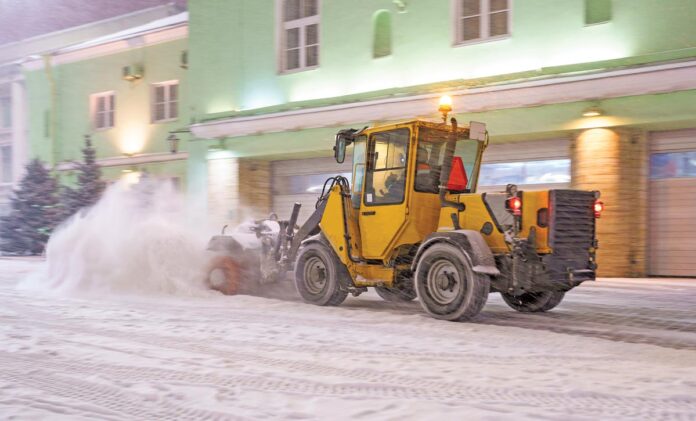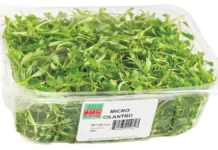
While still dealing with pandemic related challenges, this winter may bring an additional layer of unwelcomed obstacles and losses for the hospitality industry.
According to the Insurance Information Institute (III), winter storms caused $1.1 billion in insured losses in 2020. In the first half of 2021, winter storms caused a record $15.1 billion in insured losses, almost totally due to the February 2021 winter storms that affected a large area of the United States. With the winter season officially upon us, it’s important for hospitality businesses to implement safety measures and examine their insurance coverage in advance to ensure they are adequately protected.
So, what can you do to minimize your risk and keep employees and customers safe this winter? Plan ahead.
Ask yourself, what are my biggest risks and how can I mitigate them. You should pre-plan as much as possible to ensure continued uptime and safe conditions for all.
Plan now for later
Winter weather hazards can cause property damage, mobile equipment or vehicle damage, business disruptions and other headaches for business owners. To minimize property losses and claims, follow this safety checklist before the temps start to drop.
- Take temporary precautions. Temporary heat can be brought into rooms that are particularly cold or at a greater risk for freezing. Temperature-sensing cables can be tied to interior sprinklers that set off an alarm when a certain temperature threshold is crossed. Additionally, extra pipe insulation can be added in high-risk areas for very little cost.
- Annual inspections. Boilers and roofs should be inspected for potential defects and leaks at least annually, preferably just before the winter season and again after a major storm.
- Maintain temps. To prevent frozen pipes, keep thermostats at 55°F or higher, even in vacant areas. This includes empty stores in a strip mall, vacant apartments in a multi-family building or wings of a building that are unoccupied.
- Clear off snow or ice accumulation. Snow loading on a roof can cause deflection and sagging of the roof structure, damage and in some cases, roof collapse. Ice damming, or the buildup of ice on the eave and soffit area of a roof, can cause chunks to break off and fall, or when melting, can cause water to seep into the building through the roof system. Depending on the amount of snowfall or other winter conditions, put preventive measures in place, like pre-arranged snow removal for heavy accumulations, rakes on sloped roofs to reduce the likelihood of snow/ice from falling off and damaging property or injuring personnel. Block off access under areas where potentially dangerous situations exist.
- Make frequent use of your water supply. Flowing water often breaks up ice below freezing. When outside temperatures remain below freezing, it’s less expensive to run your faucet regularly than to repair a frozen or burst pipe.
- Backup the backup power. A generator will only work if it has been maintained properly. Make sure you store the appropriate amount of fuel required for backup power to function as needed.
- Practice safety with portable heaters. The National Fire Protection Association reports that space heaters – whether portable or stationary – account for as much as a third of heating fires each year. This can be the result of heaters placed near combustibles, heaters not properly plugged in or those lacking adequate safety features. Require employees using portable heaters to purchase only those with certification from an independent testing laboratory and ask that they gain approval from a supervisor or facility manager before using it. At that time, have a conversation about proper placement and care for the heater in the office.
- Have an official plan. Have a winter advisory plan that specifies when early dismissal or office closure are appropriate, and should the need arise, who will make the call and how the information will be disseminated to staff.
Understand your insurance coverage
Commercial property and casualty insurance policies almost always include “direct loss” insurance. In insurance policy language, “direct losses” refer to any damage immediately inflicted by a winter disaster, accident, or other event, known in insurance language as “perils.” If a blizzard damages a roof, a direct loss will include damage to the structure, as well as to equipment, furniture, inventory, or other items inside that could have been damaged as a result. Fire and smoke damage would count as a direct loss. So would theft, or a car crashing through the front window.
However, often times, “indirect losses” can be more damaging to a company, such as losing several months’ worth of income as a result of physical damage caused by a weather related event. Often referred to as “consequential losses” in business insurance policies, indirect losses are not inflicted by the peril itself but describe losses suffered as a result or consequence of the direct loss. Business interruption is one of the most common examples of an indirect loss. If the blizzard damages the roof of a storefront, not only are there the rebuilding costs, but the business cannot operate until the damage is fixed. Income lost during the rebuilding, as well as customers lost as a result of the down time, would represent an indirect loss.
This is why it’s critical to review insurance policies to understand they include indirect loss insurance and, if not, to secure business-interruption and additional types of necessary insurance coverage for your business, such as the following:
- Contingent business income coverage: What if your business isn’t impacted by a storm, but a key supplier of your business goes down due to a storm and as a result your business can’t meet demand? Contingent business income coverage can bridge these gaps.
- Flood coverage: It’s important to understand that most business property policies exclude flood coverage. In addition, businesses typically buy minimum flood coverage limits, but don’t consider that floods can come from even minor storms or no storm at all.
- Cyber liability coverage: Beware of post-storm cyberattacks. Phishing and email scams that include malware are known to increase post-storm, when companies are more vulnerable to cyber intrusion and attack. Consider cyber liability coverage if you do not already have a policy in place.
Don’t forget to examine deductibles. What type of deductible do you have on property coverage – a percentage or flat deductible? If your business has a lot of locations, occurrence or percentage deductibles could potentially be more costly. Additionally, many policies will have lower deductibles for wind and hail events than for a named storm.
Work with your insurance advisor to ensure you are prepared for the remainder of this winter season and the potential losses it may bring with it.
1. https://www.iii.org/fact-statistic/facts-statistics-storms























